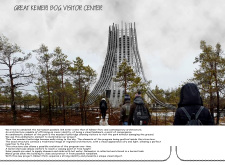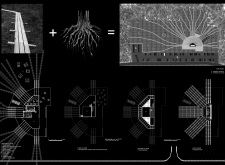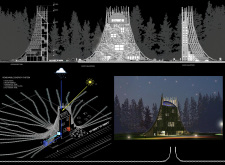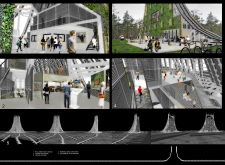5 key facts about this project
The Kémeri Bog Visitor Center is located within Kémeri Park, providing an important resource for people exploring the natural area. The structure emphasizes a modern design that connects with its surroundings. The main idea behind the center is to enhance the visitor experience while respecting the local ecosystem. This connection to nature is central to its overall design.
Key Elements of Design
A key feature of the center is a wooden footbridge that guides visitors through the park. This bridge functions as a practical path but also becomes part of the building’s walls, which rise upward and blend with the trees nearby. This approach allows people to move freely while minimizing any impact on the ground.
Sustainability Strategies
Sustainable practices are essential to the function of the visitor center. Solar panels are placed on the roof to provide hot water, helping to reduce the need for traditional energy sources. In addition, a system for collecting rainwater is implemented, allowing the center to use this resource for various purposes. Together, these features support a commitment to environmentally friendly design.
Visitor Experience
Inside, the visitor center hosts essential amenities such as ticket sales, a small kitchen, and a café area. It is designed to promote interaction, with communal spaces that include picnic tables and a terrace. These areas provide opportunities for visitors to relax and enjoy the natural setting together, fostering a sense of community.
Elevated Viewing Opportunities
The structure includes a metal staircase that leads to a viewing platform high in the trees. This design feature not only allows for better views of the landscape but encourages engagement with the environment. Additionally, protective metal grids help safeguard the building, deterring vandalism and ensuring its durability.
The visitor center presents a light and airy appearance, primarily using wood to connect with traditional regional building styles while remaining modern. This combination creates a characteristic look that allows the Kémeri Bog Visitor Center to function both as a useful space and as a natural part of the surrounding environment.





















































